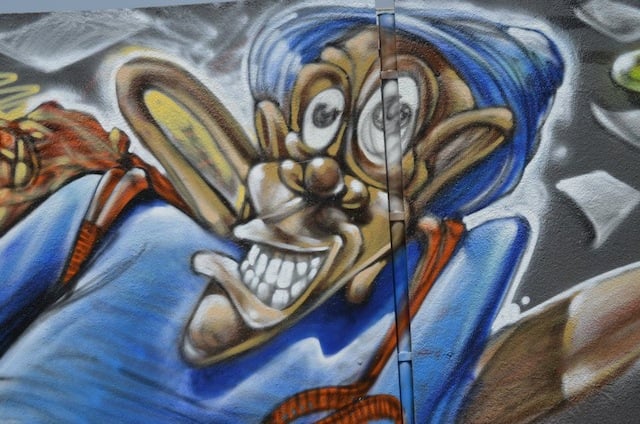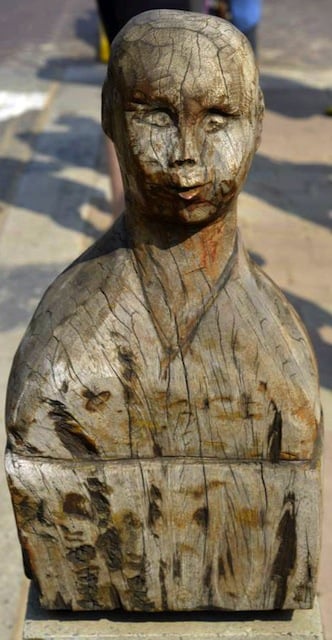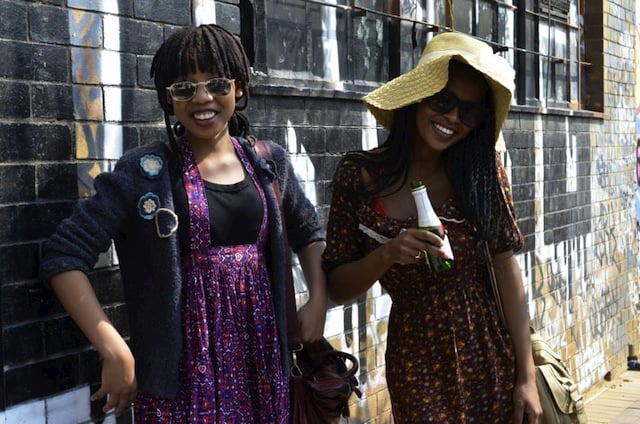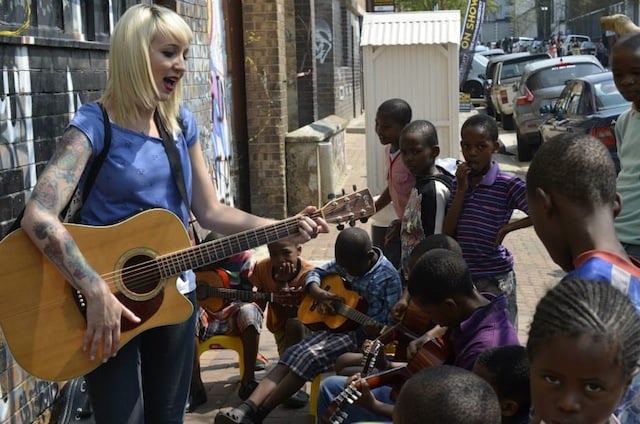Modern Joburg: Johannesburg 19 Years After Apartheid
Sitting at a hipster cafe in Maboneng, listening to jazz music, tables of whites, blacks, Asians and Indians all sitting together talking in friendly, animated fashion, it’s hard to believe Apartheid ended only 19 years ago in 1994.
Johannesburg in 2013 is a completely different world from then, so much so that even locals who grew up during Apartheid almost can’t believe it really happened. One local Erik, a South African of European descent, tells me about how strange it is thinking back on his childhood.
“I remember when my sister was five she had a ‘colored’ friend, and my mom wanted to take them into the city to go shopping. It was against the law for her to bring both girls on the same train car, as cars were marked ‘European’ and ‘Non-European.’ It was just so ridiculous.”
Even on the buses during Apartheid, Europeans (whites) sat on one level, and non-Europeans (non-whites) sat on another. Moreover, it was against the law to date or marry outside your race.
Apartheid — which lasted from 1948 to 1994 — was created by the National Party in South Africa and was a system of racial segregation that took rights away from the blacks and placed power in the hands of whites and the Afrikaners.
Because this troublesome time wasn’t very long ago, many visitors to the country are still unsure of what to expect.
Many believe that, despite the end of Apartheid, Johannesburg is still a dangerous, crime-ridden, and unwelcoming place; however, on a recent trip to South Africa where I visited Johannesburg and Cape Town, my experience left me with a different perspective of this surprisingly modern and liberal destination.
Not only is race no longer an issue to the mass population, but interracial marriage as well as gay marriage are both legal and accepted. That being said, South Africa’s transformation goes beyond opinions on race and sexuality.
Before visiting Johannesburg specifically, I expected to visit the Apartheid Museum, learn about Nelson Mandela, drink local wine and see an elephant or two.
While I did experience these things to gain some historical and cultural insight, I also enjoyed upscale shopping in Sandton; a ballet performance of “Cinderella” at the Joburg Theatre; a performance of “Umoja” — meaning “the spirit on togetherness” — which told the story of South Africa through song and dance traditions; bar crawling in Soweto; gallery hopping in Mabonang; and colorful street art in Newtown.
In essence, Johannesburg, and South Africa in general, is much more than the tragic history you hear about, but also a hub of arts, culture and entertainment.
Joburg Theatre specifically is working hard to expand the minds of locals and open them up to art forms they may not be familiar with. While ballet is popular in other parts of the world, it’s still relatively new in South Africa, although that’s slowly changing as the society focuses more on social development and new ideas.
“Since the end of Apartheid a big focus for businesses and people is democracy,” explains Lindsay McDonald, the media relations representative for Joburg Theatre. “What we want to do at Joburg Theatre is democratize ballet. We’re one of only two ballet companies in South Africa, and we want to show locals ballet can be just as entertaining as other types of dance.”
At Johannesburg’s Origins Centre I learn about African rock art, which interestingly is the oldest continuous art form in the world. It’s clear how this innovative cultural facet has stayed and become modernized. By 2040, Johannesburg has a goal of being the biggest outdoor public art city in the world. Despite the fact graffiti is illegal in South Africa the city promotes it, with the Johannesburg Development Agency (JDA) donating a portion of its funding to public art and allowing artists to create public works with permission from the building owners. The hub of street art in Joburg is Newtown, where you’ll find projects like “The Newtown Heads,” a project featuring about 560 busks crafted from recycled train sleepers, and the city’s unofficial graffiti gallery under Highway M1 on Henry Nxumalo Street.
“A common misconception is that Cape Town is all creativity and Johannesburg is all business,” explains Tania, a local street artist and my Past Experiences guide showing me around the district. “Johannesburg has experienced extreme growth in the last five to seven years. And Newtown’s great because it’s very non-commercial.”
According to Tania, this vibrant arts culture has been really beneficial to society. As outdoor art becomes integrated into the city and peoples’ lives it becomes impossible to ignore, having a positive influence on the individual whether it be inspiring them or just giving them something nice to look at. And especially when art has a context, people respect it and it gives them something to focus on.”
Exploring Soweto — an area where you once wouldn’t think of walking through but is now full of attractions — I’m surprised to learn it’s a township. In my mind, townships referred to low-income, seedy areas where one should not wander; however, I learn it’s a synonym for suburb and refers to where ‘colored’ people lived during Apartheid (today a small percentage of whites also live in townships). Fun fact: Soweto is home to more millionaires than anywhere else in South Africa, as it has a flourishing upper class section. While you’ll tend to find smaller, cheaper houses in townships, you don’t necessary have to be terrified to walk around (just confirm with your hotel where you shouldn’t go). While most of Johannesburg’s townships don’t offer much more than houses and a few cafes, Soweto is the most vibrant and commercial with shops, restaurants, artists, markets, museums, nightlife and even bungy jumping. It’s here where you can also visit the former home of Nelson Mandela and the family home of Desmond Tutu.
Another area where you’ll really see Johannesburg’s rapid modern growth is in the neighborhood of Maboneng. In 2009 Arts on Main was created, an enclosed courtyard and building reminiscent of something you’d find in Brooklyn, with galleries, studios, artisanal foods, vintage clothing, handmade accessories and more. From there, artists and performers began flocking to the area, creating a necessity for expansion and leading to the birth of Maboneng, an arts-focused neighborhood spearheaded by the Propertuity Development Company. This is where my hotel, 12 Decades, is located, confirming Joburg’s commitment to the arts. Along with 16 unique rooms each decorated by a South African local to represent a decade of the country’s history, there are themed art galleries on each floor and a Pop Art Theatre showing burlesque and comedy shows on site. Walk out of the hotel and you’ll immediately become immersed in inspiring street art, creative spaces, people enjoying wine at al fresco sidewalk cafes and locals skateboarding and biking.
“Propertuity has a unique model for urban redevelopment, as they believe in integration over gentrification,” explains Bheki, a concierge representative for Propertuity and a guide for Mainstreetwalks. “We only buy abandoned buildings. If it’s 30% or more occupied we won’t touch it.”
In only four years, Maboneng has changed inner city Johannesburg from a place rampant with garbage, crime and xenophobia into a safe, arts- focused hipster community filled with inspired locals formulating innovative ideas to help enhance the area and Johannesburg as a whole.
I’m not saying there isn’t crime in Johannesburg, as it’s certainly an issue the city deals with (as do most big cities). That being said, crime in Johannesburg has gotten much better over the past few years, especially as locals and companies — like the ones mentioned above — work together to rejuvenate the city. Yes, there are certain neighborhoods where you shouldn’t go; however, there are many where you can walk freely, interact with locals, explore culture and just enjoy a new place. A local guide, for example, Kgokare Tours can help you know where is safe to go and where isn’t, while also showing you the real Johannesburg and educating you with interesting information. I hope soon travelers will stop being afraid to explore this multifaceted city.
Have you visited Johannesburg? What’s your opinion?
*My trip to South Africa was sponsored by the South African Tourism Board. I was not required to write this post nor was I compensated. All opinions are my own.

Hi, I’m Jessie on a journey!
I'm a conscious solo traveler on a mission to take you beyond the guidebook to inspire you to live your best life through travel. Come join me!

Want to live your best life through travel?
Subscribe for FREE access to my library of fun blogging worksheets and learn how to get paid to travel more!








love that second picture
@Lindsay: Thanks! It’s so colorful. I took it at the Origins Centre in Joburg.
We may very well not all agree on some things but i admire what you wrote in this post .. I positively believe this post is seriously worth sharing to others
@Dion: Thank you for the kind words!
“I’m a conscious solo traveler”. What is that? You mean as opposed to a solo traveler in a coma? Or? Do please tell! TU 🙂
@John: Conscious Travel = Being mindful of the impact and opportunities within travel as hosts and visitors and taking action to advance the best possible outcomes for all. Here is more information: https://www.planeta.com/conscious-travel/